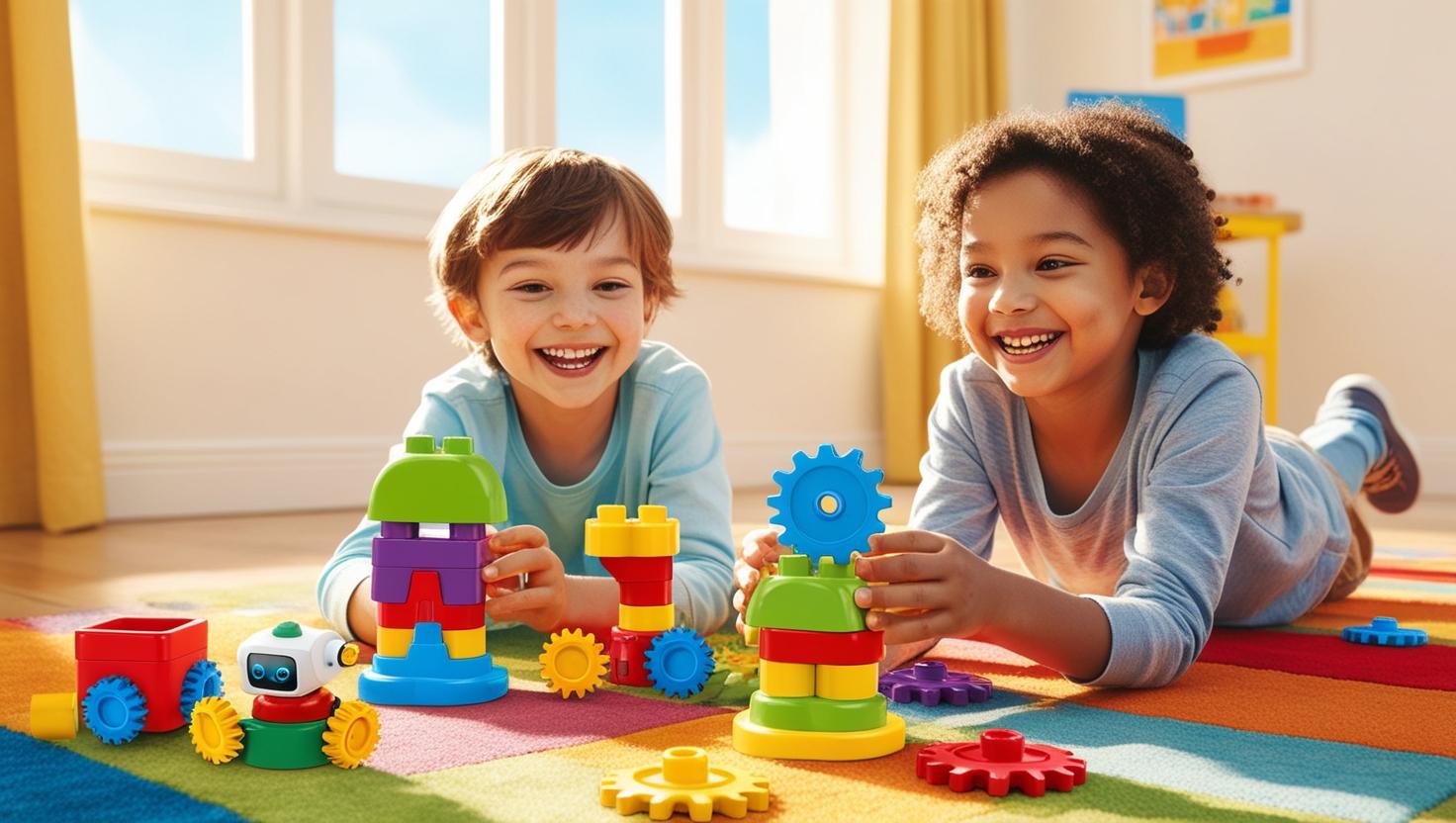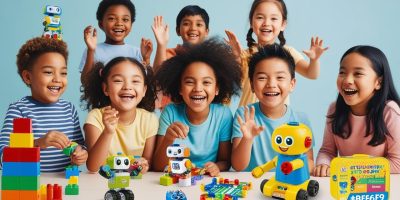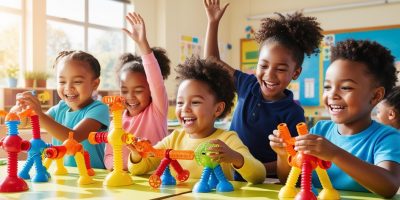When it comes to your child’s development, playtime is more than just fun — it’s a vital part of learning. That’s why so many pediatric therapists recommend STEM toys as tools to support cognitive, physical, and social-emotional growth.
Whether your child needs help with fine motor skills, sensory integration, or just some screen-free stimulation, the right STEM toys can play a powerful role. In this post, we’re diving into therapist-recommended STEM toys that help children reach important developmental milestones — while having a blast.
Why Pediatric Therapists Love STEM Toys
STEM toys — short for Science, Technology, Engineering, and Math — are uniquely hands-on. They help children:
- Strengthen problem-solving and critical thinking
- Improve hand-eye coordination and fine motor skills
- Encourage creative exploration and self-regulation
- Build confidence through trial-and-error learning
Therapists value STEM toys because they foster open-ended play — meaning kids are free to explore, test ideas, and take the lead.
1. Lego Duplo & Classic Lego Sets
Best for: Fine motor skills, visual-spatial reasoning, creativity
Therapists love Legos because they challenge little hands and minds. For younger kids, Duplos are easier to grip and less frustrating. For older children, classic Lego sets support logic, sequencing, and imaginative play.
Therapist Tip: Use Lego challenges to support executive functioning (“Can you build a tower as tall as the table using only red blocks?”).
2. Tegu Magnetic Wooden Blocks
Best for: Motor planning, balance, sensory feedback
These magnetic wooden blocks are simple, safe, and endlessly stackable. Kids practice trial and error as they test balance and magnetic connections — all while developing stronger fingers and wrists.
Therapist Tip: Great for children with sensory processing challenges due to their weight and texture.
3. Osmo Little Genius Starter Kit
Best for: Visual-motor coordination, early math, and literacy
This interactive system blends physical toys with digital play in a therapist-approved way. It helps children trace letters, count, and problem-solve by manipulating real-world pieces in front of an iPad.
Therapist Tip: Works especially well for kids with ADHD or attention challenges due to its engaging and visual format.
Learn more from Harvard’s Center on the Developing Child →
4. Snap Circuits Jr.
Best for: Cognitive development, sequencing, cause & effect
Snap Circuits help kids learn how electrical circuits work by snapping pieces together to create working devices — like alarms or fans. It’s empowering, structured, and perfect for building focus.
Therapist Tip: Ideal for neurodivergent children who enjoy step-by-step learning and clear outcomes.
5. Kinetic Sand or Mad Mattr STEM Kits
Best for: Sensory integration, calming stimulation, creative play
Kinetic sand is not just fun—it’s therapeutic. Many pediatric occupational therapists use it to calm kids, support tactile exploration, and build hand strength through sculpting or tool use.
Therapist Tip: Use it with science-themed kits (like fossil digging or volcano making) for STEM+Sensory fusion.
6. Marble Run Sets (like GraviTrax)
Best for: Planning, coordination, perseverance
Building a marble run requires patience, strategy, and creativity. It’s one of the best STEM toys to develop frustration tolerance and fine motor control in a fun, exciting way.
Therapist Tip: Play together at first, then challenge your child to redesign or improve the run independently.
7. Botley 2.0 Coding Robot
Best for: Early programming skills, spatial reasoning, following directions
This screen-free robot teaches basic coding by using a remote to input directions. It’s a hit with therapists because it blends play with early logic and helps kids visualize step-based thinking.
Therapist Tip: Encourage your child to “debug” when Botley goes the wrong way — it reinforces patience and sequencing.
8. Magna-Tiles or PicassoTiles
Best for: Bilateral coordination, 3D thinking, imagination
These magnetic tiles offer endless building possibilities and help children use both hands together (bilateral coordination), which is key for writing and dressing skills.
Therapist Tip: Use a light table for extra sensory input and visual engagement.
Tips for Parents
- Rotate toys regularly to keep interest high without clutter
- Follow your child’s interests — are they builders, tinkerers, artists? Pick accordingly
- Don’t worry about “finishing” a toy — focus on process, not product
- Ask your child’s therapist what specific skills they’re targeting, and match toys to those goals
Final Thoughts
Not all toys are created equal — and STEM toys aren’t just for school readiness. They’re also therapeutic tools backed by science and widely used by pediatric therapists.
By incorporating a few of these therapist-approved STEM toys, you’re not just giving your child something to do — you’re helping them grow in every sense of the word.
Authoritative Sources Referenced:





